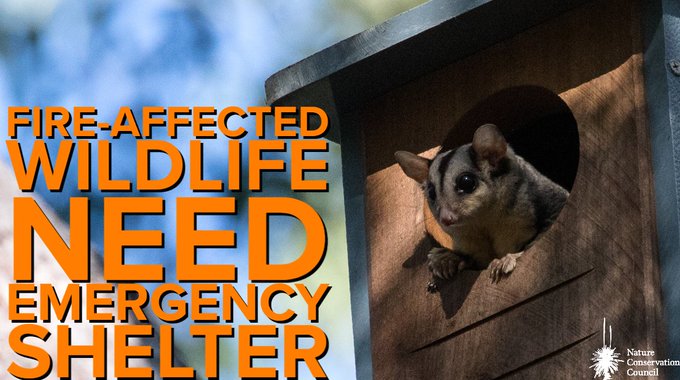THE HON ANTHONY ALBANESE MP
LEADER OF THE AUSTRALIAN LABOR PARTY
MEMBER FOR GRAYNDLER
TERRI BUTLER MP
SHADOW MINISTER FOR THE ENVIRONMENT AND WATER
MEMBER FOR GRIFFITH
ECOLOGICAL AUDIT NEEDED FOLLOWING NATIONAL DISASTER
The Morrison Government should convene a meeting of state and territory environment ministers and commence an Australian Natural Asset Audit, amid estimates that up to one billion animals have perished in the nation’s bushfire disaster.
The Government must also guarantee continued funding for the nation’s Bushfire Cooperative Research Centre, which will cease to exist from July next year because it does not conform to the Government’s rewritten guidelines for CRCs, which favour commercial research.
Australians love the bush. Many of us live in the bush and our precious wildlife is deeply ingrained in Australian sense of identity.
With more than eight million hectares burned so far this bushfire season, we must turn to land management specialists and scientists to assess the scale of this ecological disaster and advise governments on a national approach to recovery efforts.
The Melbourne-based Bushfire Cooperative Research Centre is building disaster resilient communities across the country by bringing together all of Australia and New Zealand’s fire and emergency services authorities with leading experts across a range of scientific fields.
In 2013 the Labor Government provided $48 million to fund the centre for eight years through to June 2021 based on warnings by scientists that climate change would increase the severity and frequency of extreme weather events.
Despite its strong record of success and ongoing need for national collaboration over natural disasters, the centre is ineligible for further funding under the Morrison Government’s current CRC Guidelines.
This bushfire season, up to 26 lives have been lost and at least 1800 homes have been destroyed.
Our key focus must be to support affected communities, victims and families of those who have lost their lives.
But Australians have also been shocked by graphic and heart-rending images of dead and injured wildlife as well as farm stock.
It is critical that as part of the recovery we understand the impact of the tragedy on the National Estate, including our wildlife, and that we better understand how to reduce bushfires and protect our precious natural habitat.
As part of whole-of-government approach to rebuilding our communities, the Federal Government must act now to better protect Australia’s unique natural assets.
The bushfire emergency is a national crisis that requires a national response.
Labor is proposing:
1. An Australian Natural Asset Audit
- The Morrison Government should immediately commence Australian Natural Asset Audit to understand the true impact that these devastating bushfires on our national icons and natural assets. The audit would assess the loss of our native animal and plants species that have been wiped out an unprecedented rate during the bushfire crisis engulfing Australia, and would assess habitat loss and impacts on environmental assets.
- The Commonwealth should mobilise Australian scientists and land management professionals to immediately begin the mammoth task of assessing the ecological and biodiversity damage to Australia’s natural assets. The audit would enable the government to bring together Australia’s best ecologists and on the ground practitioners, including rangers from our national parks, local and state government environmental management staff, farmers and indigenous leaders from impacted areas.
- The audit should be used to inform short, medium and long-term recovery efforts, including urgently supporting the Threatened Species Scientific Committee on immediate actions to increase the recovery, management and protection of Australia’s threatened species, including any new listings required, and to recommend proactive measures for the next bushfire crisis.
2. Start national recovery planning now: The Commonwealth should urgently convene a meeting of the environment ministerial council to commence recovery planning now
- Immediately start recovery planning through the joint environment ministerial council with the states, to assess animal hospital services, demand and funding and short to medium-term recovery measures in key habitats for existing critically endangered species.
- The Government should also take steps to activate a coordinated national group of Landcare volunteers in an Australia-wide effort to recover and regenerate our key natural assets and to protect the economic benefits and jobs that flow from our international reputation as a natural wonderland.
3. Immediately guarantee funding for the Cooperative Research Centre
- Prime Minister Scott Morrison must provide funding certainty to the Bushfire and Natural Hazards Cooperative Research Centre.
- The Bushfire and Natural Hazards CRC has less than 18 months of funding left and is currently ineligible for renewed funding under the Morrison Government’s amended CRC Guidelines.
- The Centre predicts a return on Commonwealth investment of 7:1 through reduced loss of life and injury, reducing government costs and reducing insurance costs.
For example, the town of Gracemere in Queensland was saved in 2018 as a result of science-based predictive capacity developed by the Centre.













